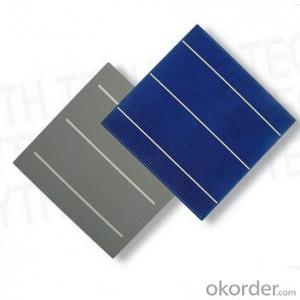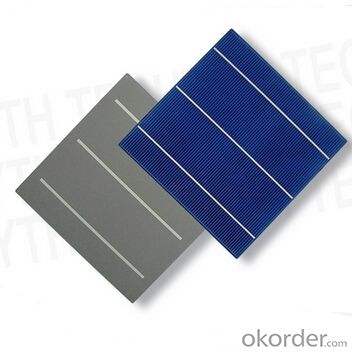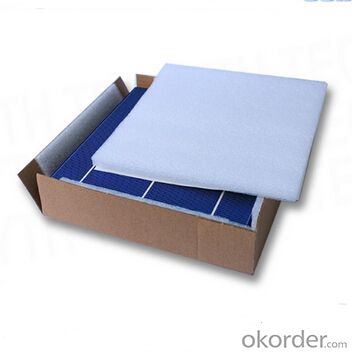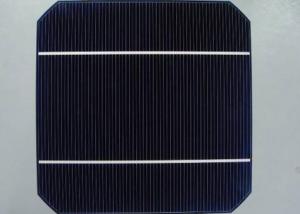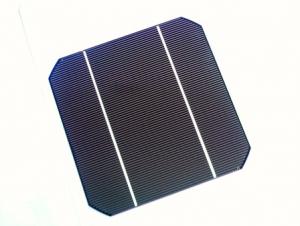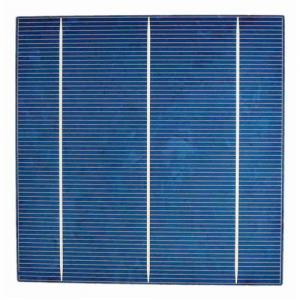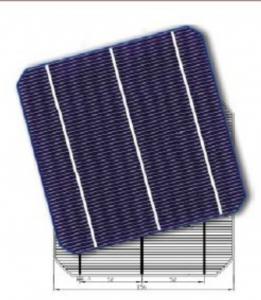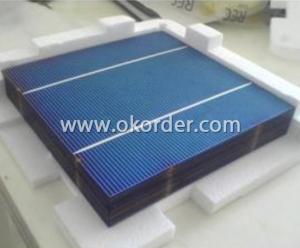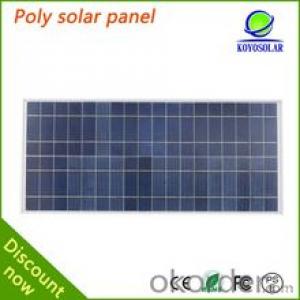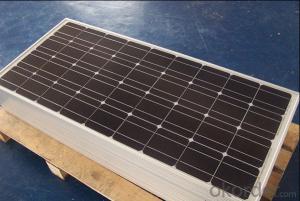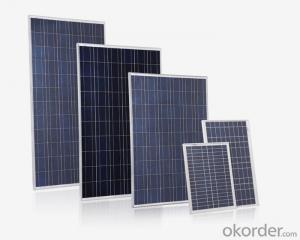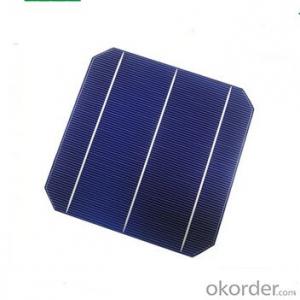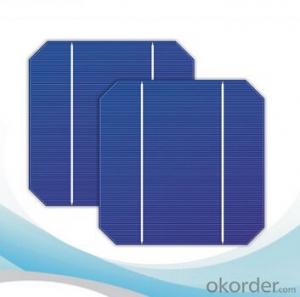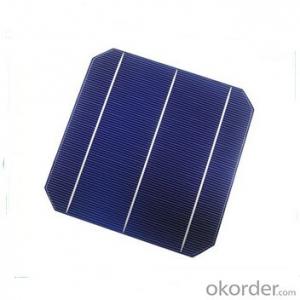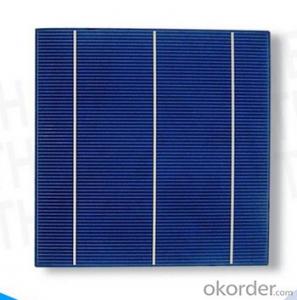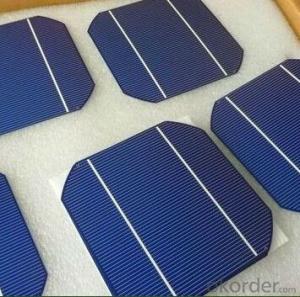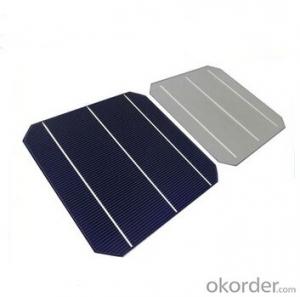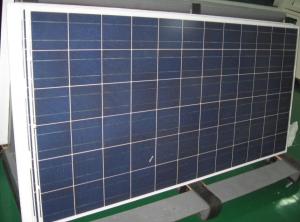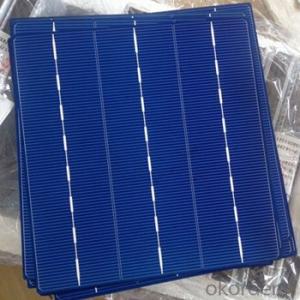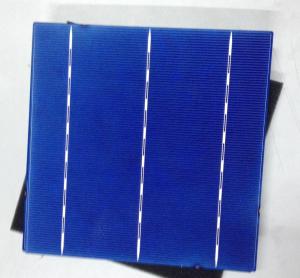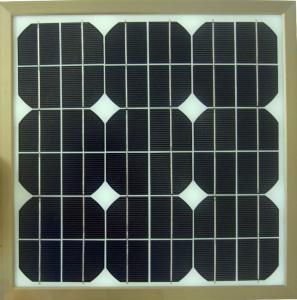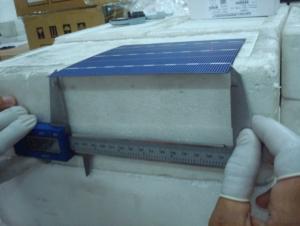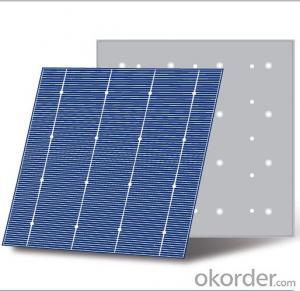Invisible Monocrystalline Solar Cells High Quality 17.00-18.20
- Loading Port:
- Shanghai
- Payment Terms:
- TT OR LC
- Min Order Qty:
- 1000 pc
- Supply Capability:
- 1000000 pc/month
OKorder Service Pledge
OKorder Financial Service
You Might Also Like
Solar Cells:
Solar cells is made by solar wafer, it has three categories of solar cell right now, monocrystalline polycrystalline and thin film,These cells are entirely based around the concept PN junction, which is the critical part of solar module, it is the part that can convert the light energy into electricity, the thickness is from 180um to 200um, with even busbars to conduct electricity, textured cell can decrease diffuse reflection; they are often electrically connected and encapsulated as a module. Photovoltaic modules often have a sheet of glass on the front (sun up) side, allowing light to pass while protecting semiconductor wafers from abrasion and impact due to wind-driven debris, rain, hail, etc. Solar cells are also usually connected in series in modules, creating an additive voltage. Connecting cells in parallel will yield a higher current;With high quality and stable quality. Our Cells can greatly improve the performance of Solar Modules.
Features:
1. High conversion efficiencies resulting in superior power output performance.
2. Outstanding power output even in low light or high temperature conditions
3. Optimized design for ease of soldering and lamination
4. Long-term stability, reliability and performance
5. Low breakage rate
6. Color uniformity
Solar Cells Advantage:
• High efficiency and stable performance in photovoltaic conversion.
• Advanced diffusion technique ensuring the homogeneity of energy conversion efficiency of the cell.
• Advanced PECVD film forming, providing a dark blue silicon nitride anti-reflection film of homogenous color and attractive appearance.
• High quality metal paste for back surface and electrode, ensuring good conductivity, high pulling strength and ease of soldering.
• High precision patterning using screen printing, ensuring accurate busbar location for ease with automatic soldering a laser cutting.
Specifications:
Efficiency code | 182 | 180 | 178 | 176 | 174 | 172 | 170 | |
Efficiency | Eff(%) | 18.20 | 18.00 | 17.80 | 17.60 | 17.40 | 17.20 | 17.00 |
Power | Ppm(W) | 4.43 | 4.38 | 4.33 | 4.28 | 4.23 | 4.19 | 4.14 |
Max. Power current | Ipm(A) | 8.26 | 8.22 | 8.17 | 8.12 | 8.08 | 8.05 | 7.99 |
Short Circut Current | Isc(A) | 8.71 | 8.68 | 8.63 | 8.60 | 8.56 | 8.53 | 8.49 |
Max. Power Voltage | Vpm(V) | 0.536 | 0.533 | 0.530 | 0.527 | 0.524 | 0.521 | 0.518 |
Open Cirtuit Voltage | Voc(V) | 0.634 | 0.632 | 0.630 | 0.627 | 0.625 | 0.622 | 0.620 |
Packaging & Delivery of Solar Cells
Carton Box Package and Deliver by air. It should be noticed that it should be avoid of water, sunshine and moist.
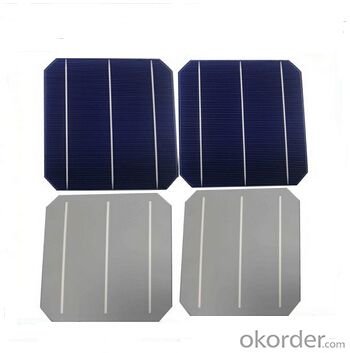
FAQ
We have organized several common questions for our clients,may help you sincerely:
①What price for each watt?
It depends on the efficiency of the solar cell, quantity, delivery date and payment terms.
②How long can we receive the product after purchase?
In the purchase of product within three working days, We will arrange the factory delivery as soon as possible. The pecific time of receiving is related to the state and position of customers.Commonly 7 to 10 working days can be served.
③Can you provide the peripheral products of the solar panels, such as the battery, controller, and inverter? If so, can you tell me how do they match each other?
Yes, we can, we have two companies for solar region, one is CNBM International, the other is CNBM engineering Co.
We can provide you not only the solar module but also the off grid solar system, we can also provide you service with on grid plant.
④What is your warranty of solar cell?
Our product can promise lower than 0.3% open box crack, we support claim after opening the box if it has crackm color difference or sth, the buyer should give pictures immediately, we can not accept the claim after the solar cell has assembled to solar panel.
• Timeliness of delivery
• ⑤How do you pack your products?
We have rich experience on how to pack the solar cell to make sure the safety on shipment, we could use wooden box or pallet as buyer's preference.
- Q: What is the efficiency of solar cells?
- The efficiency of solar cells can vary, but on average, it ranges from around 15% to 20%. However, some advanced solar cell technologies can achieve efficiencies of up to 40%.
- Q: Does the solar cell generate electricity in the absence of the sun, only in the case of strong lights or lasers? If you can achieve how much, and the same day?
- One of the directions for the development of modern solar cells is to maximize the frequency range of the light waves that can be energized (to the low frequency direction) to increase the power generation efficiency of solar cells.
- Q: What is the impact of shading on solar cell performance?
- Shading has a significant negative impact on solar cell performance. When a solar cell is partially shaded, it reduces the amount of sunlight reaching the shaded area, leading to a decrease in power generation. This is because shading disrupts the flow of electrical current within the solar cell, resulting in reduced efficiency and overall output. Even a small amount of shading, such as from trees, buildings, or debris, can have a noticeable impact on the performance of the solar cell. Therefore, it is important to carefully consider the placement and positioning of solar panels to avoid shading and maximize their efficiency.
- Q: Anybody ever heard of thin film solar cell? What it that?
- I did hear that term once, but can't remember what it is.
- Q: How do solar cells impact national energy policies?
- Solar cells have a significant impact on national energy policies by driving the shift towards renewable energy sources. As solar power becomes more affordable and efficient, governments are incentivized to promote its adoption through various policies and initiatives. This includes providing subsidies and tax incentives to encourage investment in solar energy, setting renewable energy targets, and implementing net metering policies that allow consumers to sell excess electricity back to the grid. The wide-scale deployment of solar cells helps diversify energy sources, reduce dependence on fossil fuels, and mitigate climate change, thereby shaping and influencing national energy policies.
- Q: How does the size of a solar cell affect its performance?
- The size of a solar cell directly affects its performance. Generally, larger solar cells can generate more electricity as they have a larger surface area to collect sunlight. This means they can absorb more photons and convert them into electrical energy. Additionally, larger solar cells tend to have lower resistance and better efficiency. However, larger cells also require more materials and are more expensive to produce. Therefore, the optimal size of a solar cell depends on various factors, including the available space, budget, and desired energy output.
- Q: Can solar cells be used to power electric vehicles?
- Yes, solar cells can be used to power electric vehicles. Solar panels can be installed on the roof or body of an electric vehicle to capture sunlight and convert it into electricity, which can then be used to charge the vehicle's batteries. This allows the vehicle to be partially or fully powered by solar energy, reducing reliance on traditional charging methods and promoting sustainability. However, the efficiency of solar cells and the limited surface area available on vehicles may currently limit their ability to solely power electric vehicles, but they can certainly contribute to extending their range and reducing their carbon footprint.
- Q: How much does a solar cell cost?
- It's not easy to answer the question in a simple way, but an example is the residential solar systems are typically sized from 3 to 8kW and end up costing between $15,000 and $40,000.
- Q: How do solar cells perform in regions with high levels of dust and sandstorms?
- Solar cells can be affected by dust and sandstorms in regions with high levels of such conditions. The accumulation of dust particles on the surface of solar panels can reduce their efficiency by blocking sunlight and creating a layer of insulation. Regular maintenance, such as cleaning the panels to remove dust and debris, is crucial to ensure optimal performance. Additionally, advancements in solar panel designs, such as anti-reflective coatings and self-cleaning mechanisms, are being developed to mitigate the impact of dust and sandstorms on solar cell performance in these regions.
- Q: Can solar cells be used on wearable technology?
- Yes, solar cells can be used on wearable technology. Advances in technology have made it possible to integrate small, flexible, and lightweight solar cells into wearable devices such as smartwatches, fitness trackers, and even clothing. These solar cells can convert sunlight into electricity, providing a sustainable and convenient way to power wearable technology.
Send your message to us
Invisible Monocrystalline Solar Cells High Quality 17.00-18.20
- Loading Port:
- Shanghai
- Payment Terms:
- TT OR LC
- Min Order Qty:
- 1000 pc
- Supply Capability:
- 1000000 pc/month
OKorder Service Pledge
OKorder Financial Service
Similar products
Hot products
Hot Searches
Related keywords
